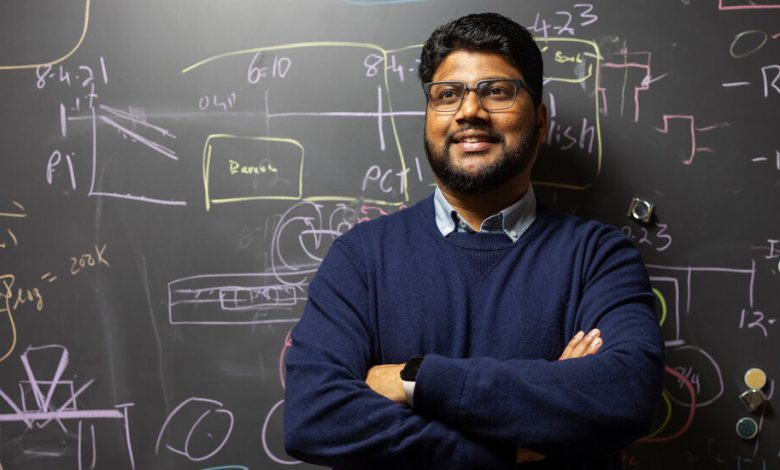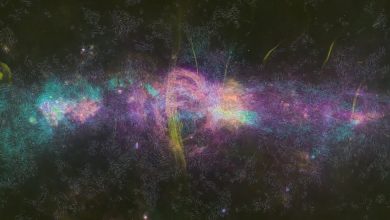A Looming Retraction Casts a Shadow Over a Field of Physics

A major physics journal is retracting a two-year-old scientific paper that described the transformations of a chemical compound as it was squeezed between two pieces of diamond.
Such an esoteric finding — and retraction — would not typically garner much attention.
But one of the leaders of this research is Ranga P. Dias, a professor in the physics and mechanical engineering departments at the University of Rochester in New York who made a much bigger scientific splash earlier this year, touting the discovery of a room-temperature superconductor.
At the same time, accusations of research misconduct have swirled around Dr. Dias, and his superconductor findings remain largely unconfirmed.
The retracted paper does not involve superconductivity but rather describes how a relatively mundane material, manganese sulfide, shifts its behavior from an insulator to a metal and then back to an insulator under increasing pressure.
A complaint that one of the graphs in the paper looked fishy led the journal, Physical Review Letters, to recruit outside experts to take a closer look.
The inquiry arrived at disquieting conclusions.
“The findings back up the allegations of data fabrication/falsification convincingly,” the journal’s editors wrote in an email to the authors of the paper on July 10.
The Times obtained copies of the email and three reports written by the outside reviewers. Those have not been published but have circulated among scientists in the field. The journal Nature reported earlier on the upcoming retraction.
The reviewers were all unconvinced by the explanations proffered by the authors. Furthermore, additional data requested by the journal to back up the paper’s claims clearly did not match what had been published.
While Dr. Dias continues to defend the work, to some scientists, there is now clear evidence of misconduct.
“There’s no plausible deniability left,” said N. Peter Armitage, a professor of physics and astronomy at Johns Hopkins University in Baltimore who is among the scientists who have seen the reports. “They submitted falsified data. There’s no ambiguity there at all.”
Over the past few years, Dr. Dias and his colleagues have published a series of spectacular findings in top scientific journals.
The latest claim came in March. They described, in the journal Nature, the discovery of a superconductor — a material that conveys electricity without losing energy to electrical resistance — that worked at temperatures up to 70 degrees Fahrenheit (although it also required a crushing pressure of 145,000 pounds per square inch). Most superconductors have to be chilled to ultracold temperatures, which limits their practical use.
Many scientists were skeptical, however, because an earlier superconductor paper by Dr. Dias and his colleagues, also published in Nature, had already been retracted. Critics have also discovered that Dr. Dias’s doctoral thesis, completed in 2013 at Washington State University, contains swaths of plagiarism that were copied from other scientists’ work.
Several of the authors of the two Nature papers also appear on the Physical Review Letters paper on manganese sulfide. Those include Dr. Dias; Ashkan Salamat, a professor of physics at the University of Nevada, Las Vegas; and Keith V. Lawler, a research professor at Nevada.
In a statement provided by his publicist, Dr. Dias said, “We express our disappointment regarding the decision made by PRL’s editors and have duly submitted our responses to address their inquiries concerning the data quality in the original paper.”
No scientific misconduct occurred and the work contained no fabrication or manipulation of data, Dr. Dias said in the statement.
Dr. Salamat and Dr. Lawler did not respond to requests for comment.
Dr. Dias’s publicist said the authors were still in discussion among themselves, and with the journal’s editors, about the next steps.
Media representatives for the University of Rochester and the University of Nevada, Las Vegas, said the schools were aware of discussions of the proposed retraction, and if they received notice that the paper was retracted because of misconduct, they would follow their policies for handling such allegations.
The Physical Reviews Letters inquiry focused on one figure in the paper that purported to show electrical resistance in manganese sulfide. However, very similar curves also appeared in Dr. Dias’s thesis for an entirely different material, germanium selenide.
The scientists, labeled Reviewers Alpha, Beta, Delta and Gamma, were not identified. (Alpha and Beta collaborated on a joint report.) When asked for the original experimental data used to generate the graph, Dr. Salamat provided a spreadsheet of numbers that further raised suspicions.
All of the reviewers noted that when they plotted Dr. Salamat’s data on a chart, they did not see kinks visible in the published graph. “The alleged ‘raw’ data appears to be a smoothed and otherwise doctored version of the data shown” in the journal article, Reviewers Alpha and Beta wrote.
In their email, the journal editors wrote, “We view this lack of correspondence and what appears to be a deliberate attempt to obstruct the investigation as another ethical breach.”
The journal told the authors that they could volunteer to retract the paper themselves. The journal added that it would retract the paper if the authors did not.
Until now, both the University of Nevada and the University of Rochester have lauded the potential breakthroughs that a room-temperature superconductor could lead to.
“I hope this forces the institutions involved — the University of Rochester, the University of Nevada, Las Vegas — to confront what’s going here,” Dr. Armitage said.
After James J. Hamlin, a professor of physics at the University of Florida, reported the similarities between the graphs, one of the paper’s authors, Simon A.J. Kimber, said he immediately recognized problems with the resistance data.
“I called for a retraction less than 24 hours later and was uninvolved in attempts to prevent it,” Dr. Kimber said in an email.
The other authors — Dr. Salamat and Dr. Dias, in particular — continued to defend the paper, saying that under pressure, both manganese sulfide and germanium selenide act like metals, and thus it would not be surprising that both materials would conduct electricity similarly.
The reviewers were not convinced, pointing to smaller kinks in the curves that appeared to be measurement glitches or noise.
“If you want an analogy,” said one of the reviewers, who asked to remain anonymous because the reviewers have not been publicly identified, “you could say, Oh, one blond actress looks like any other blond actress. But these blips are more like the mole on the cheek of Marilyn Monroe.”
To find another blond actress with an identical mole at the same location on the same cheek would defy disbelief. That is how closely the manganese sulfide curve matches the germanium selenide one, this reviewer said.
The conclusion in the report of Reviewer Gamma wryly noted that this match, if true, would herald a major discovery — “a novel universality in nature” that different materials under different conditions behave the same.
Reviewer Gamma added, “It is also conceivable that these findings suggest a departure from standard practices in experimental condensed matter research and require closer investigation.”
As the Physical Review Letters paper faces retraction, the superconducting claim from March remains in scientific limbo.
“The group that made this phenomenal claim is a group that now is demonstrably engaged in slipshod or even fraudulent data handling,” said the reviewer who spoke on the condition of anonymity. “It just puts a giant beware sign on these results.”
The cloud of suspicion and uncertainty hovering over Dr. Dias overshadows earlier breakthroughs by other scientists, the reviewer said. Beginning in 2014, a research group led by Mikhail Eremets of the Max Planck Institute for Chemistry in Germany showed that hydrogen-containing compounds are superconductors at surprisingly warm temperatures when squeezed under ultrahigh pressures.
“There really does look like there’s high-pressure, near-room-temperature superconductivity,” the reviewer said. “This is a phenomenal discovery and is broadly accepted in the community.”
Dr. Dias is not the only researcher searching for a room-temperature superconductor. A paper posted by researchers in South Korea a few days ago claims that modifying the mineral apatite produces a superconductor that works at ordinary temperatures and pressures.
The magnesium sulfide episode echoes a scientific scandal two decades ago at Bell Labs in New Jersey. A physicist there, J. Hendrik Schön, published groundbreaking research that turned out to be fabricated.
“My initial reaction is that this is very similar to the Schön case in terms of what appears as data duplication,” said Lydia L. Sohn, a professor of mechanical engineering at the University of California, Berkeley, who was one of the scientists who found nearly identical graphs in several of Dr. Schön’s papers.
Dr. Sohn said the evidence so far was not enough to reach a confident conclusion of scientific misconduct in the magnesium sulfide work. She noted that a panel assembled to investigate the Bell Labs scandal offered Dr. Schön the opportunity to verify his experiments.
“The PRL authors should be given this opportunity as well,” Dr. Sohn said. If the phenomenon is real, she said, “then the data will repeat.”



